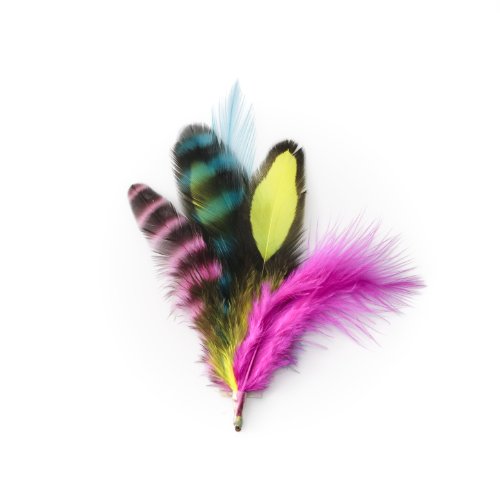Retrievers were originally bred as hunting dogs. Their job was to sit by the hunter and wait until game was shot and then retrieve it on command. This often meant swimming through cold water or running through dense brush. Labs were also taught not to damage the game upon returning it to their master.
Knowing what type of tasks the dogs were bred to perform assists us in analyzing what type of behaviour to expect from a breed. In the case of labs, they are fairly insensitive to touch. They readily leap into cold water and sit patiently in the cold in order to please their master. Physically tough dogs, they are very tolerant with children and respond well to training techniques that engage their strong desire to please.
They are also sound insensitive so that the loud bang of a hunter's gun won't disturb them. Loud noise, such as that from children, does not tend to bother labs and yelling at them will generally not get a response.
Working retrievers had no use for aggression since handling birds roughly or growling at other hunters is not required. Labs are friendly dogs that will gladly hunt with anyone, or, in other words, play fetch with anyone who is willing. They are great around guests in your home, your children's friends and they tend to see everyone as a friend or potential playmate.
All retrievers and labs are of course no exception, love to have items in their mouth. They are extremely oral and this is not to be confused with aggression: this is in their breeding, it is instinctual. Chewing on sticks, toys, balls, socks and so on is dog heaven for them. If you are considering owning a lab, you must tech them what to put in their mouths and what not. Otherwise your furniture and belongings may suffer.
Labrador retrievers are, in general, fantastic dogs. Great with children, great family dogs, fun loving, energetic and beautiful, it's little wonder that they are number one in the American Kennel Clubs ranking. However, this extreme popularity can lead to a wide range in quality of dogs so be very careful in selecting your breeder. Some labs could be fearful and aggressive so make certain to observe your pup before you decide on your choice.
Labs are very enthusiastic, lively and smart. They respond well to training and should be trained to engage their brains and control their exuberance. Their sheer excitement often causes them to jump up, steal your socks, pull on lead, or counter surf the kitchen but this can be corrected through proper training, supervision and exercise. Labs need a lot of exercise and this is easy because they love doing everything - running, swimming, fetching, romping, or just plain walking. Most of all, they just love being with you.
The coloring of a lab can run from almost white to pale cream to brown and black. They require minimal grooming and shed moderately. Their coats are silky and smooth and dry quickly when wet. They will reach a height of approximately two feet and weigh, on average, from 55 to 80 pounds although some can weigh much more.
Common health concerns for this breed include hip dysplasia, cataracts, retinal atrophy and bloat. Labs have low bite potential and interact with other pets quite well. When selecting a lab for family use you should avoid dogs that have been bred strictly for field use. These field dogs have absolutely incredible energy which is difficult to harness in a domestic setting.

 3 Tips to Stop your Dog from Pulling on the Leash While Walking and Keep Your Arms in Their Sockets
3 Tips to Stop your Dog from Pulling on the Leash While Walking and Keep Your Arms in Their Sockets
 Fashion For Dogs: Trends and Styles for the Chic Pooch
Fashion For Dogs: Trends and Styles for the Chic Pooch
 Dogs :: Four Basic Commands That Your Dog Need to Learn (Page 1 of 2)
Dogs :: Four Basic Commands That Your Dog Need to Learn (Page 1 of 2)
 Are Gentle Leaders Really Gentle?
Are Gentle Leaders Really Gentle?
 My Dog Lunges And Barks At Other Dogs
My Dog Lunges And Barks At Other Dogs
 Puppy Potty Training Carpet Cleaning Tips
Puppy Potty Training Carpet Cleaning Tips
 Is a Standard Poodle the Right Dog for You?
So youve decided to add a do
Is a Standard Poodle the Right Dog for You?
So youve decided to add a do
 Why Dry Dog Food Is Bad For Dogs
Credit: Copyright of iStockphoto. All rights
Why Dry Dog Food Is Bad For Dogs
Credit: Copyright of iStockphoto. All rights
 3 Tips to Stop your Dog from Pulling on the Leash While Walking and Keep Your Arms in Their Sockets
If you find walking your dog
3 Tips to Stop your Dog from Pulling on the Leash While Walking and Keep Your Arms in Their Sockets
If you find walking your dog
 Pet Health Part 1
PlantLooks like a Cactus
Credit: Wiki
Pet Health Part 1
PlantLooks like a Cactus
Credit: Wiki
 Eight Reasons Why Your Dog Is Aggressive
Dogs have been a man’s
Eight Reasons Why Your Dog Is Aggressive
Dogs have been a man’s